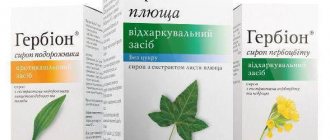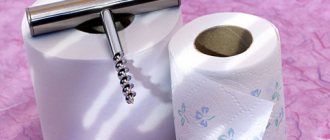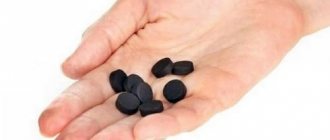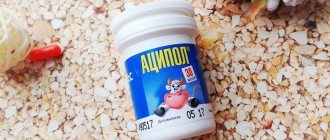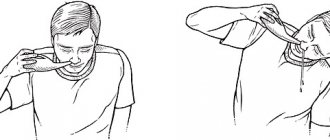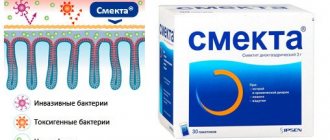The cough reflex is a frequent accompaniment of respiratory infections and colds. It literally exhausts many patients with its attacks, and then various procedures come to the rescue, including mustard plasters for dry coughs. They promote the expansion of peripheral capillaries, accelerate the outflow of blood from the source of inflammation, improve the overall health, and speed up the patient’s recovery.
What are mustard plasters?
Mustard powder is a well-known folk remedy with which various pathologies have been and continue to be treated. With the development of medicine, the product began to be placed in bags made of thick paper. The method of using mustard plasters is indicated on the packaging of the purchased product. They effectively help with nasal congestion, headaches, joint and muscle pain, high blood pressure, and colds.
Mustard is a local irritant drug. The product effectively eliminates pain and has an anti-inflammatory effect. Before starting treatment with burning compresses, you need to know that this is an active drug that can harm the body if used incorrectly.
Packaging with medicine
At what age can mustard plasters be used?
When using burning compresses, it is important to take certain features into account. The child's body is extremely sensitive to the effects of medications and natural ingredients. Doctors allow the use of warming compresses for children from 12 months. However, experts prohibit starting treatment with traditional methods until diagnostics have been carried out, an accurate diagnosis has been established and consultation with a therapist. The specialist sets the dosage and duration of the procedure. The duration varies depending on the age of the child:
- Up to three years - from 1 to 2 minutes.
- From three to six years - from 1 to 3 minutes.
- From 7 years - from 1 to 10 minutes.
When warming up, you need to look at the child’s reaction. If the baby complains of pain, the mustard plaster must be removed.
At what temperature can mustard plasters be placed?
Mustard powder in compresses is a warming agent used to treat colds. However, it is not allowed in all cases. The initial period of development of colds is characterized by an increase in body temperature. In order not to harm the body, you need to wait a day. You can apply a burning compress at temperatures below 37 degrees.
How often can it be used?
The use of burning compresses with mustard powder should be arranged according to a specific schedule. To do this, you need to undergo an examination. The specialist selects the number of warming procedures based on the general situation, the course of the disease, and the presence of complications. He will determine exactly how many days compresses need to be used to improve the patient’s general condition. It is recommended for an adult to apply no more than one mustard plaster in 24 hours. Children can have a warming procedure once every 48 hours. The average duration of treatment with mustard plasters is 10 days. To avoid leaving burns on the skin, you need to alternate the places where compresses are applied.
Mustard packet
Contraindications
There are a number of contraindications when even the presence of a cough is not a reason to use this remedy:
- presence of allergies;
- acute respiratory infections;
- cough due to bronchial asthma;
- the patient has cancer.
Mustard plasters are effective for modern treatment, despite the fact that their effect has been tested for more than one decade. They cope well with many diseases and are almost indispensable for residual cough. The compress is inexpensive, has a local effect, is harmless when used correctly and can replace some pharmaceutical drugs.
Benefits and harms
Any medical procedure, if performed incorrectly, can harm the body. Mustard plasters have a number of beneficial and harmful properties. The benefit of mustard plasters is that they have the following effects:
- Help clear the upper respiratory tract of mucus.
- Relieves symptoms during colds.
- Helps during the development of pneumonia.
- Eliminates pain in joints and muscles.
- Helps cope with cough, laryngitis.
- Alleviates the condition of osteochondrosis.
Harm:
- increased body temperature;
- the appearance of seizures;
- skin burn;
- the appearance of headaches, dizziness.
If discomfort occurs, you should refuse the treatment procedure and immediately consult your doctor.
An attack of dizziness
Contraindications for use and precautions
There are a number of medical contraindications for the warming procedure. You should familiarize yourself with them if you plan to treat your cough with mustard plasters.
Increased body temperature.
Warming up can provoke an additional increase in the thermometer level. This happens especially often in children. If a child's cough is accompanied by a febrile fever, then you should wait a few days before using mustard plasters.
Individual intolerance.
Some people have a peculiarity - an allergy to mustard. If you or your child have this uniqueness, then you should not put mustard plasters on.
Inflammatory skin diseases.
If there are boils, suppuration or skin damage at the site where the warming packs were applied, the procedure should not be carried out until they are completely healed.
Pregnancy and lactation period.
Women in these two conditions are contraindicated for any thermal procedures, including mustard plasters. It is better to trust a specialist and treat the cough with some other method.
Asthma.
Contraindication to the use of warming bags. The fact is that the procedure can provoke another attack. If the cough is caused by asthma, then it cannot be treated with mustard plasters.
Neoplasms.
This includes malignant or benign. The location of the tumor is not particularly important. For any neoplasm, temperature fluctuations are extremely undesirable.
Internal bleeding.
Mustard plasters increase blood circulation and dilate blood vessels. If there is bleeding in the respiratory organs, it will become stronger. The consequences can be not only unpleasant, but also life-threatening.
How do mustard plasters work?
To understand the effectiveness of a folk remedy, its benefits and harms, it is necessary to know the principle of action of mustard plasters. These are store-bought sachets that stick to the skin. The mustard powder that is added to them contains essential oils. For the oils to start working, you need to moisten the powder with water. After this, the bags are applied to the skin. When exposed to the components of mustard powder, blood circulation improves. Thanks to this, the blood flow brings useful microelements and vitamins to weakened cells. Taking medications becomes more effective.
In addition to improving blood circulation, mustard plasters actively affect the autonomic and nervous system. This improves the body's protective functions and activates the immune system.
Operating principle
How does this even work? After all, mustard plaster is a simple piece of paper smeared with mustard paste, or a non-woven bag divided into sections filled with mustard powder. That is, the only active ingredient is ordinary mustard, which in itself does not have healing properties.
The therapeutic effect is achieved due to the fact that mustard plaster soaked in water and placed on the body begins to actively irritate the skin. This is influenced by the glycoside sinalbin contained in mustard seeds. Irritation causes a whole chain of responses:
- expansion of blood vessels and capillaries;
- activation of blood circulation;
- increased heart rate;
- relieving tension and spasms;
- launching regeneration processes.
In addition, mustard plasters help relieve pain, or rather, act as a distraction. If the irritation is strong, the body begins to produce endorphins to block unpleasant sensations. In fact, placing mustard plasters is a full-fledged physiotherapeutic procedure that can be easily done at home.
Children's mustard plasters for coughs
They are intended for young children - from 1 to 7 years. This option is convenient because you can cut a plate of the desired size with a certain number of bags.
In addition, in children's mustard plasters the concentration of essential oil is reduced so that it does not cause excessive irritation to delicate skin, which still has a very thin layer of epidermis and weak function of the fat glands.
Mustard contains essential mustard oil, which when the powder gets wet comes into contact with the skin and has an irritating effect. There is a feeling of burning, warmth, redness and swelling of the skin due to increased blood flow, the temperature in this area rises, and tissue immunity is activated.
The most important quality of mustard plaster is its naturalness, which ensures the least danger to health. The powder for preparing pharmaceutical mustard plasters is obtained from mustard seeds, a plant widely used in the food industry. Mustard is known and loved for its unique qualities, and it is also a natural antibiotic.
The mustard plaster itself is a square of thick paper on which pressed and dried mustard powder is applied. Another form of mustard plasters is becoming popular, where the powder is located in a bag with thin paper on one side and polyethylene on the other. There are only 4 sachets in one plate. These products are also found with the addition of essential oils to improve the positive effects on the body.
A compress in the bronchi area stimulates the dilation of blood vessels and blood flow to the diseased organ. All this starts the process of cell nutrition. Under the influence of the warming effect, the muscles of the respiratory organs, spasmed by cough, relax, secretion begins in the mucous membranes, and the bronchial ducts are washed. An expectorant effect occurs, promoting the release of sputum from the bronchi.
Mustard plaster is a small paper bag with dry and fat-free mustard seeds. Some companies use mustard powder and paper containers with thick foil cells to produce the product. It is believed that such a filter package will better warm up tissues and organs, but there is no official confirmation of this. The pharmacological action of mustard plasters is as follows:
- Upon contact with water, mustard essential oil is released.
- The skin at the site of application is irritated, due to which blood circulation begins to increase.
- Skin receptors are irritated, which leads to activation of the sympathetic nervous system.
- Sympathin and adrenaline begin to accumulate in the blood, which causes an increase in the body’s protective functions.
- The result of all biochemical reactions is the removal of sputum, saturation of the respiratory organs with useful nutrients and oxygen.
Indications and contraindications
Indications for gluing warming compresses:
- tracheitis;
- ARVI;
- cold symptoms;
- hypertension;
- radiculitis, osteochondrosis.
Mustard plasters for dry cough should be used by adults only after an examination and recommendations from a therapist, since any error in the use of the drug can provoke a deterioration in the patient’s condition. Contraindications:
- skin diseases, rash, severe itching;
- children under one year of age;
- presence of open wounds;
- high body temperature;
- individual intolerance to the components of the product;
- pregnancy;
- malignant neoplasms.
High body temperature
Contraindications and side effects
Mustard plasters should not be used for common inflammations of the lung tissue - pneumonia, tuberculosis. Contraindications include obstructive bronchitis and bronchial asthma. Thermal procedures are contraindicated at high temperatures.
Mustard powder is very hot and causes skin irritation. The procedure is not performed if the skin is damaged, there are scratches or abrasions. People with hypersensitivity and children under one year of age may experience allergies or develop skin burns.
It is not advisable to apply mustard compresses to pregnant women, especially in the early stages. Accelerating blood flow increases the tone of the uterus, which can provoke a miscarriage.
Do mustard plasters help with cough?
Mustard patches help with severe coughs. It is important to understand that there are two types of coughing:
- wet;
- dry.
Each of the presented types of cough has its own characteristics of course and treatment. If you choose the wrong medications or folk remedies, you can aggravate the symptoms and cause complications.
For what kind of cough mustard plasters are used?
Mustard compresses can be applied when different types of cough occur. The main thing is to know the methods of use, the characteristics of the disease, and possible complications.
Mustard plasters for wet cough
Most often, this symptom occurs due to pneumonia, various forms of bronchitis and tracheitis. The appearance of the symptom is accompanied by inflammatory processes affecting the lower part of the lungs.
To improve the patient’s condition, it is necessary to use drugs and folk remedies that help remove phlegm from the lungs. Burning compresses are most often placed in the area of the bronchi and lungs. Warm-up duration is no more than 10 minutes.
Can you apply mustard plasters for a dry cough?
A dry cough behaves differently than a wet cough and requires different treatment. The burning substance should dilute the mucus and remove it from the lungs. The patches need to be glued in the chest area, between the shoulder blades. The average duration of the procedure is 9 minutes. Then you need to carefully remove the compress. Next, the person needs to lie down for 40 minutes under a thick blanket.
Dry cough
Medicinal properties of mustard plasters
Mustard plasters have long been considered an effective remedy for colds accompanied by cough. Thanks to mustard seeds and mustard essential oils, the patient's skin has a local irritant effect. That is why these funds received such a name. They are sold ready-made in pharmacies or prepared at home using improvised ingredients.
In the usual version, the basis of mustard plaster is thick paper or fabric, cut into small rectangular sheets. Their surface is covered on one side with low-fat mustard powder. Currently, the “design” of mustard plasters has undergone changes. Now they are produced in the form of two-layer paper bags, with the same mustard powder poured inside.
This remedy produces a stable warming effect and is used in medicine as a compress when deciding whether it is possible to apply mustard plasters for a dry cough. The action of this tool occurs according to the following scheme:
- Mustard seeds, when placed in warm water, begin to actively release essential oils.
- After installing the mustard plaster on the surface of the skin, essential oils begin to have a chemical irritant effect.
- As a result of this effect, blood and lymphatic vessels, subcutaneous tissues and local organs begin to expand.
- All this helps to increase blood circulation and accelerate metabolism.
- In the area where the mustard plaster is installed, a local increase in temperature occurs, the patient first experiences thermal sensations, and after some time, under the influence of the mustard, a slight tingling of the skin occurs.
Taken together, the entire mechanism of action helps to stop some inflammation, and local irritation effectively relieves pain. Therefore, mustard leaves are used for any type of cough, including dry cough, without sputum production.
Mustard plasters for coughs: instructions for use
At home, it is easy to treat with warming compresses. The procedure differs depending on the type of cough, the age of the patient, and the characteristics of the disease.
How to properly apply mustard plasters for coughs?
It is easier for an adult to stick, hold, and remove the burning patch than for a child. There is no need to choose which side to apply the compress to. The skin of an adult is less sensitive to heating and burning. Before carrying out the procedure, you need to prepare a product with a hot mixture, a container filled with warm water (not boiling water), a towel, vegetable oil, and a thick blanket. Application:
- Place paper compresses in a bowl. Hold them under water for 10 seconds.
- Apply the bag to the patient's body. Cover the heated area with a towel on top. The patient should cover himself with a warm blanket.
- Keep the compress on the heated area for about 10 minutes. The time period is selected individually.
When the burning intensifies, you need to peel off the patch. You can reduce the burning sensation by placing gauze under the burning bag. When the patch is peeled off, you need to wipe the heated area with a towel, wipe the warmed area with vegetable oil, and cover the patient with a thick blanket.
How to apply mustard plasters for coughs in children?
You can buy children's mustard plasters in pharmacies. They have a less active effect. The procedure differs from that used by an adult. Instructions:
- The baby needs to be put on the bed. Occupy his attention with interesting pictures and cartoons.
- Immerse the mustard plasters in a container under warm water.
- Place the patches on the middle of the chest or between the shoulder blades. During gluing, apply the side with the powder to the skin. To prevent pain for the child, you can place gauze between the patch and the skin.
- After every 60 seconds, examine the skin where the compress is applied. If the baby is in pain or starts crying, you need to peel off the patch and wipe the warming area with a towel to remove any remaining burning mixture.
After 5 minutes, completely remove the mustard plaster and wipe the area with a towel. Cover the child with a warm blanket.
Where to put mustard plasters for coughs?
A person starting treatment with compresses needs to know where it is best to place mustard plaster. By mistake, a person can stick the patch arbitrarily, which will not give any effect or harm the body. Places where you can put mustard plasters:
- rib cage;
- caviar;
- back in the area of the shoulder blades;
- heels.
Places that are prohibited from being covered with burning patches:
- heart area;
- peritoneum;
- spine;
- kidney area;
- on the nipples;
- on the liver.
By following these rules, you can avoid serious complications.
Mustard plaster on the chest
How long should you keep mustard plasters on when you cough?
Therapists say that there is no exact time for the warming procedure using mustard plasters. It all depends on the sensitivity of the person’s skin, the presence of complications, and the course of the disease. It is important to consider age:
- The duration of warming up when treating a child’s body is 1–7 minutes.
- For adults, the duration of the procedure is increased to 15 minutes.
The burning sensation from the product will be present in any case. Knowing how long to hold mustard plasters when an adult or child coughs, you can avoid burns and long-term pain.
Rules for using mustard plasters
The main principle of medicine is to do no harm, so you should know how to properly apply mustard plasters for coughs. Remember that dry mustard is used only externally; when it is inhaled or taken orally, serious burns to the mucous membrane and poisoning occur.
How to install mustard plasters correctly?
Mustard sachets or mustard leaves must be dipped in warm water for a few seconds, removed and, shaking off excess drops, placed on the patient’s dry skin, covered with insulating cloth on top.
Make sure that the integrity of the package is not broken, otherwise the mustard will get on unprotected skin and may cause a burn.
What kind of cough do mustard compresses treat?
Mustard plasters are good for treating non-productive dry cough. After the compress, the bronchial mucosa expands, which promotes better sputum discharge. The cough becomes wet.
For a wet cough, a compress can also be applied, but you should be prepared for a sharp increase in stagnant mucus.
Where to put mustard plasters?
The scope of application of mustard plasters is wide, so you should know where to put mustard plasters for coughs and other diseases.
- Dry cough, bronchitis, pneumonia. Mustard plasters are placed in the middle part of the sternum closer to the collarbone or on the back between the shoulder blades (avoid the spine area). It is worth saying that warming the airways well with a mustard compress is not enough. Be sure to use them in combination with inhalations and antiviral drugs.
- Sore throat, runny nose. Under no circumstances should the compress be placed on the face and throat; the skin there is too delicate. It is recommended to place mustard plasters on the calves or feet. In this case, blood flows out of the throat and nasopharynx, and inflammation decreases.
- Musculoskeletal system. For radiculitis and osteochondrosis, the mustard plaster is located in the place where pain is localized - the lumbar region, neck, back of the head.
- Heart pain and high blood pressure. If you are worried about angina pectoris, then mustard will dilate blood vessels and increase blood circulation; you need to place a compress in the heart area. If you have high blood pressure, a compress on your feet and calves will help reduce it. The blood flow will be redistributed, the patient will feel relief.
- Muscle pain. For sprains, sports or other injuries, place mustard plaster on the problem area.
Of course, the need to use mustard plasters in these and other cases should be discussed with your doctor. Self-medication in any form is considered undesirable.
How long should you keep it?
How long should you keep mustard plasters on to avoid getting burned? The compress time depends on the sensitivity of the skin. As a rule, it takes from 5 to 15 minutes to achieve a positive effect.
As soon as the skin turns red or you feel an increasing burning sensation, it’s time to remove the mustard plasters.
What to do in case of a burn?
If the mustard plaster was used incorrectly or the procedure time was increased, a burn may remain. You need to know how to relieve pain in the first moments after injury. Procedure:
- carefully peel off the mustard patch from the skin;
- Rinse the burn area with cold running water;
- use a sterile cloth to remove any remaining moisture;
- Apply a layer of antiseptic to the burn - it should have a calming and healing effect.
If the pain does not subside, you should immediately consult a doctor.
Features of treatment of bronchitis in children with mustard plasters
Using mustard plasters for bronchitis in children is much more difficult than treating an adult with this method.
Children do not want to tolerate heating of the skin and may resist or cry.
But even if you managed to persuade the child to put mustard plasters on the chest, it is important to remember some of the features of such treatment.
- Firstly, it is necessary to choose only high-quality mustard plasters that have the required shelf life and remain intact. If mustard powder spills somewhere, it can cause a burn to the child's skin.
- Secondly, for a small child’s chest, one mustard plaster is most often enough. Don't try to place several pieces side by side to cover the entire surface of the skin. There will be no benefit from mustard leaves on the sides of the ribs or on the stomach, and they should absolutely not be placed in the heart area.
- Thirdly, the procedure time should be reduced. It is better to listen to your child and remove the mustard plasters if he feels a burning sensation or severe discomfort.
What can be replaced?
Among the folk remedies for treating cough, you can find similar methods of treatment, without the use of burning compresses:
- Pour dry mustard powder into socks. Remove them after 15–20 minutes.
- Use heated jars. However, keep in mind that after using them, marks remain on the body.
- Foot baths based on dry mustard. Mix 50 grams of the substance with warm water. Keep your feet in the basin for 20 minutes.
Burning compresses are considered an effective remedy for treating coughs. However, it is necessary to take into account the active effect of mustard plasters in order to avoid burns or other complications.
How to make mustard plasters at home
Sometimes it happens that you decide to use mustard plasters, for example, for a cough, and the pharmacy mustard plasters are out of stock. It doesn’t matter, making mustard plasters at home is quite easy.
If mustard plasters are needed for adults, then we prepare them as follows. We dilute the mustard powder in a glass of warm water, I don’t indicate the proportions, since we add the powder gradually and stir thoroughly so that there are no lumps. The consistency of the mustard should be like thick sour cream.
Contraindications for grandma's treatment
Yes, there are contraindications for the use of mustard plasters, and there are quite a few of them. Typically, mustard plasters are recommended to alleviate dry coughs with bronchitis, tracheitis, pneumonia and other respiratory diseases. They are also used for wet coughs in order to shorten the period of drug treatment and ensure good sputum discharge. But there are a number of cases when the use of mustard plasters is not only not recommended, but is directly prohibited.
- Heat. Mustard plasters are not used in acute cases of the disease.
- Oncological processes in the body.
- Tuberculosis (even without hemoptysis).
- Asthmatic phenomena.
- Allergic nature of cough.
- Intolerance to mustard essential oils (quite common).
- Pulmonary hemorrhages of any origin.
- Pregnancy – serious disruptions in the oxygen supply to the fetus are possible.
- Skin damage at the sites where mustard plasters are applied.
- Eczema or psoriasis at the sites of intended use.
- High skin sensitivity (usually found in blondes, redheads and young children).
Hypertensive patients should use the product with caution, since irritation caused by mustard causes a significant increase in blood pressure. You also need to remember about overdose. In this case, it will be expressed in skin burns due to the long duration of the procedure and exceeding the period of use of mustard plasters. They are placed once a day for no more than a quarter of an hour. The course of treatment cannot be more than 4 days.
Where to put mustard plasters?
The following locations are optimal:
- Back between and under the shoulder blades.
- On the chest under the collarbones and in the areas of projection of the bronchi.
- On the legs you can put on your feet, as well as games.
When the mustard plasters have already been laid, it is necessary to cover the person warmly. The most optimal and acceptable option is to use mustard plasters before bedtime, since there is no need to go anywhere after the procedure. If you decide to make mustard plasters on your legs, you can fix them and insulate them with warm tights or knee socks.
A very interesting effect can be achieved by pouring mustard powder directly into your socks. For one leg, a tablespoon will be enough for an adult, and a teaspoon for a child.
How to make mustard leaves with your own hands
Mustard plasters can be bought at the pharmacy or prepared yourself. To do this, you need to prepare dry mustard, flour, hot water, parchment paper, napkin or gauze.
Instructions for making homemade mustard leaves:
- Mix mustard powder and flour in a 1:1 ratio;
- Gradually pour hot water into the dry mixture to form a mass whose consistency resembles batter;
- Leave the mixture for 15 minutes to swell;
- Apply the paste to parchment, cheesecloth or cloth.
Place the mustard plasters on the skin with the paper or fabric side, cover them with the same layer on top, and then cover them with a towel and a warm blanket.
As you can see, mustard compress helps improve a person’s condition with various diseases , so there is more benefit from it than harm. However, before using it, you should visit a doctor who will identify the cause of the ailment and tell you about the features of use.
To avoid allergies, irritation or skin burns, you need to carry out the procedure according to certain rules. They can only cause harm if used thoughtlessly and excessively.
Take precautions
It is important to ensure that there is no burn on the skin; you can use gauze or a napkin. If an adult feels a burning sensation and understands when the mustard plaster needs to be removed, then a small child will not tell about it. Therefore, children from one to three years old are not recommended to apply it for longer than 1-2 minutes. If the child is between 3 and 8 years old, 3 minutes will be enough for him. For children aged 8 to 12 years old, it is enough to spend 5 minutes with mustard plaster. Children older than this age can already appreciate the time when the mustard plaster needs to be removed.
The duration of the procedure for an adult lasts from 15 to 20 minutes. Then the patient needs to be wrapped up and given a restful rest. Usually the procedure is carried out before evening sleep.
When are mustard plasters used? Why do they put it?
Previously, mustard plasters were quite a popular remedy among Soviet doctors. Modern doctors extremely rarely resort to their use due to the lack of clinically proven effectiveness.
However, many patients and doctors recommend the remedy, relying on their own or practical positive experience.
It is believed that the medicine irritates the skin, stimulating an increase in local temperature, and activates immune function.
Do mustard plasters help and when are they indicated? There is no evidence base for the remedy, but there is many years of positive experience in its use.
Basically, patches are prescribed for the purpose of distraction therapy for persistent paroxysmal cough, to reduce inflammation and exudation in the organs of the respiratory system.
They are also recommended to be used to enhance local blood flow and stimulate the body's defenses.
USEFUL:
How to increase a child’s immunity if he is sick? Read more…
What they look like
Mustard plasters are applied not only for coughs, but also for degenerative-inflammatory diseases of the locomotor system (osteochondrosis, lumbodynia, sciatica, radiculitis), sprains, pain in the heart, bruises, painful sensations in the muscles.
The effect of mustard on the human body
Note! Improper use of this product can be harmful, so it must be used strictly according to the instructions. You should be especially careful if the doctor has prescribed mustard plasters for a child with a cough.
Mustard has a local irritant and warming effect on body tissue. The warming effect is based on local hyperthermia, which is provoked when mustard particles get on the skin. At the same time, blood circulation is stimulated as a result of vasodilation.
The irritating effect is based on signal transmission from skin receptors to elements of the central nervous system. This provokes the release of adrenaline and activation of the immune system.
Phagocytic reactions are launched, aimed at destroying foreign infectious particles. Based on this, there can be no doubt about the question of whether mustard plasters help with cough.
Proper procedure
In order to avoid side effects, it is necessary to follow the recommendations during the procedure. This will avoid skin burns and other unpleasant symptoms.
Mustard plasters are sold in pharmacies in the form of ready-made paper bags filled with mustard powder. This form makes it easier to use this product. In this case, you need to know how to apply mustard packets correctly.
Stages of the procedure:
- Place the mustard plaster in a container of warm water for 10 seconds.
- Place the mustard plaster on the desired area of the body, pressing slightly with a towel.
- Cover the mustard plaster with a cloth, leave for 10 minutes, and during subsequent procedures add two minutes at a time.
Mustard plasters for children when coughing should be placed with the back side in order to prevent skin burns.
Note! The duration of the procedure is determined by the sensitivity of the skin. Do not allow excessive redness to avoid burning the skin. If a strong burning sensation occurs, the procedure should be stopped immediately.
For cough, mustard plasters should be used outside the acute period of the disease - otherwise their use may worsen the condition. It is necessary to use this remedy at the very beginning of the disease at the first symptoms, and after an exacerbation, for 3-4 days. This enhances the functionality of the immune system and allows it to actively fight infection.
Mustard plasters on the chest
When coughing, mustard plasters on the chest are effective in cases of upper respiratory tract pathologies such as pneumonia or bronchitis.
Correct localization of mustard plasters on the chest
In this case, you should choose the right place to place the mustard plaster:
- for colds, they are placed on the middle third of the chest;
- for pneumonia and bronchitis - on the upper third of the chest.
Knowing where to apply the mustard packet can enhance the effectiveness of this treatment method. The skin in the chest area is delicate, because of this it is necessary to check their reaction to mustard plaster at intervals of two minutes, and, if necessary, complete the procedure. After removing the mustard packet, the skin should be wiped with a towel and lubricated with nourishing cream.
Mustard plasters on the back
Mustard plasters should be placed on the back in case of colds, bronchitis, pneumonia and other diseases that provoke coughing. When coughing, mustard plaster should be placed on the back in the area between and under the shoulder blades.
This approach helps warm up the bronchi and remove mucus. The procedure time is the standard 10-15 minutes; if a burning sensation occurs, the mustard plasters should be removed immediately.
Contraindications to the procedure
The effectiveness of using mustard powder for colds is beyond doubt. But improper use of the product can lead to undesirable results.
There are a number of contraindications to the use of mustard plasters, namely:
- Cracks and scratches on the skin.
- Feverish conditions.
- Allergic reactions.
- The presence of moles , papillomas and other formations on the skin.
- Associated skin diseases : eczema, psoriasis, atopic dermatitis, pyoderma, neurodermatitis.
- Children under one year of age . Children 2 years of age and older can have mustard plasters, but with great caution and on the recommendation of a pediatrician.
Other recipes for using mustard for colds
Mustard cough powder is an excellent remedy for colds, and there are many effective recipes based on it. One of them is mustard cough cake, the recipe for which is presented below.
Mustard flatbread
So, to prepare mustard flatbread you will need:
- a tablespoon of mustard powder;
- a tablespoon of flour;
- a tablespoon of vegetable oil.
Knead the dough from these ingredients and roll it out thinly on gauze or a bag. Place the cake on your chest, avoiding the heart area. Place a warm scarf or blanket on top.
Leave for a couple of hours, for sensitive skin - for an hour. After the procedure, remove the compress and wipe the skin with a damp towel. When preparing the product for children, reduce the amount of mustard to one teaspoon.
Foot baths
You can also do foot baths with mustard powder when you have a cold. To do this, add 1-2 tablespoons of mustard to warm water and mix.
Precautionary measures
- People with white or thin sensitive skin should put an additional layer of gauze under the mustard compress.
- Children are advised to apply the mustard plaster with the reverse side or pre-lubricate the skin with baby cream to reduce the burning sensation.
- It is unacceptable to install mustard plasters at temperatures above 37 degrees.
- Check the integrity of the package; if there are damaged areas, the mustard powder may spill out and enter the respiratory tract.
- Wash the skin after the compress to remove mustard particles.
- Do not treat a burn with alcohol.
- Vegetable oil and Vaseline will help with mustard burns.
Where should mustard plasters be applied?
The location of mustard leaves or bags depends on the disease:
- Laryngitis with barking cough - on the neck, chest, calf muscles;
- Tracheitis with dry cough and pain in the throat and behind the sternum - in the sternum area, as well as in the interscapular area;
- Inflammation of the upper respiratory tract - on the sternum, as well as the calf muscles;
- Runny nose - on the heels or put on socks with mustard powder;
- Insomnia, headache, increased blood pressure (blood pressure) - on the back of the neck, calves;
- Lower back pain – in the lower back;
- Osteochondrosis – on the damaged area (on the sides of the spine) and legs.
It is strictly forbidden to place mustard plasters on the heart area, mammary glands, thyroid gland, or spine.
They may be adjacent to the areas described above, but not overlapping them.
How to install mustard plasters?
Let's look at the correct algorithm for applying mustard plasters.
- If you are going to use mustard plasters for the first time in your life, first do an allergy test. To do this, just apply the mustard plaster itself to the skin without wetting it. After 15 minutes, the result should be noted. If you see redness without a rash, then everything is fine; you do not have an allergy.
- Both children and adults should not place mustard plaster in the area of the heart or directly at the projection site of the spine. Place a gauze or cloth pad between the mustard plaster and the child's skin. This will help protect against burns and also make the action gentle.
- For children under three years old, mustard plasters can be applied for a couple of minutes, for children from three to eight years old, a 3-minute procedure will be enough, and for children under twelve years of age, 5 minutes with mustard plasters will be enough. An adult should hold the mustard plaster for 15-20 minutes.
- After applying mustard plasters, you should cover yourself warmly, dress warmly, and it is best to stay in bed as long as possible. That is why the optimal time to apply mustard plasters is before bed.
Mustard plasters should not be made more than 3 times. They negatively affect the functioning of the heart. If after 3 days with mustard plasters there is no improvement, you should abandon this treatment. In such a situation, only a doctor can decide further actions.
